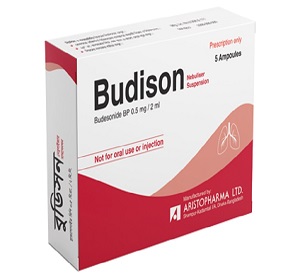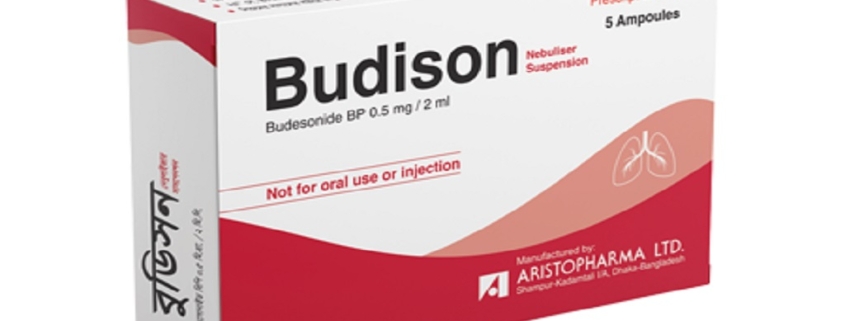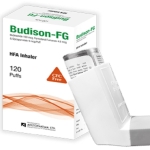Budison Nebuliser Suspension (Budesonide)
Budison Nebuliser Suspension consists of Budesonide a corticosteroid that exhibits potent glucocorticoid activity and weak mineralocorticoid activity. Budesonide has approximately a 200-fold higher affinity for the glucocorticoid receptor and a 1000-fold higher topical anti-inflammatory potency than cortisol.
Description
Budison Nebuliser Suspension consists of Budesonide a corticosteroid that exhibits potent glucocorticoid activity and weak mineralocorticoid activity. Budesonide has approximately a 200-fold higher affinity for the glucocorticoid receptor and a 1000-fold higher topical anti-inflammatory potency than cortisol. Budison Nebuliser Suspension is indicated for the maintenance treatment and as prophylactic therapy for asthma.

Presentation
Budison Nebuliser Suspension: Each 2 ml ampoule contains Budesonide BP 0.5 mg.
Indications
Budison Nebuliser Suspension is indicated for the maintenance treatment and as prophylactic therapy for asthma.
Dosage & Administration
Children (3 months to 12 years): 0.25 to 0.5 mg twice daily. In some cases, the dosage may be further increased up to 1 mg twice daily.
Adults: usually 1 to 2 mg twice daily.
Contrainidications
Hypersensitive to any of the ingredients of Budison Nebuliser Suspension.
Warning & Precautions
Adrenal insufficiency can occur in asthmatic patients who are transferred from systemically active corticosteroids to inhaled corticosteroids. Particular care is needed in patients who require high-dose emergency corticosteroid therapy. Patients previously on high doses of systemic steroids may regain earlier symptoms not related to asthma such as rhinitis and eczema when transferred from oral therapy to Budison Nebuliser Suspension. The development of pharyngeal and laryngeal candidiasis is cause for concern because the extent of its penetration into the respiratory tract is unknown. For patients with TB, fungal or viral infections special care is needed. Avoid abrupt withdrawal when switching from systemic therapy to oral or orally inhaled corticosteroid.
Side effects
The most commonly reported adverse events are rhinitis, coughing, otitis media, moniliasis, vomiting, diarrhea, abdominal pain, ear infection, epistaxis, conjunctivitis & rash.
Drug interaction
Budesonide has not been observed to interact with any drug used for the treatment of asthma. Slight inhibitory effect on hepatic metabolism of Budesonide, caused by cimetidine. CYP3A4 inhibitors like ritonavir and azole antifungals (e.g. ketoconazole and itraconazole) increase systemic exposure to Budesonide. Therefore, concomitant use of Budesonide and ritonavir or azole antifungals should be avoided.
Use in special groups
Use in pregnancy: There are no adequate and well-controlled studies in pregnant women. Budesonide should be used during pregnancy only if the potential benefits outweigh the risks to the fetus.
Use in lactation: It is not known whether Budesonide is excreted in human milk. Because other corticosteroids are excreted in human milk, caution should be exercised if Budesonide is administered to nursing women.
Budison Nebuliser Suspension: Each box contains 5 ampoules in alu-pvc blister pack.



